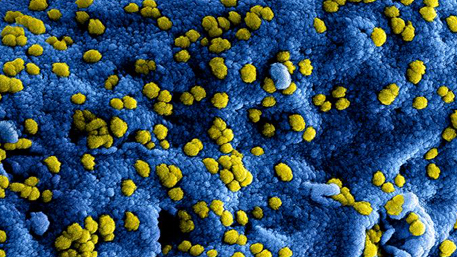
Crowding and the shape of COVID-19 epidemics
B Rader et al, Nature Medicine, October 5, 2020
B Rader et al, Nature Medicine, October 5, 2020
We analyzed highly resolved spatial variables in cities, together with case count data, to investigate the role of climate, urbanization and variation in interventions. We show that the degree to which cases of COVID-19 are compressed into a short period of time is strongly shaped by population aggregation and heterogeneity, such that epidemics in crowded cities are more spread over time, and crowded cities have larger total attack rates than less populated cities.
Longitudinal high-throughput TCR repertoire profiling reveals the dynamics of T cell memory formation after mild COVID-19 infection
AA Minervina et al, BIORXIV, October 1, 2020
AA Minervina et al, BIORXIV, October 1, 2020
Multiple early introductions of SARS-CoV-2 into a global travel hub in the Middle East
A Abou Tayoun et al, BIORXIV, October 1, 2020
A Abou Tayoun et al, BIORXIV, October 1, 2020
Synonymous mutations and the molecular evolution of SARS-Cov-2 origins
H Wang et al, BIORXIV, October 2, 2020
H Wang et al, BIORXIV, October 2, 2020
Early Evidence of Effectiveness of Digital Contact Tracing for SARS-CoV-2 in Switzerland
M Salathe et al, MEDRXIV, October 4, 2020
M Salathe et al, MEDRXIV, October 4, 2020
Predicting public take-up of digital contact tracing during the COVID-19 crisis: Results of a national survey
YE Saw et al, MEDRXIV, October 5, 2020
YE Saw et al, MEDRXIV, October 5, 2020
The Pandemic of Health Care Inequity
LR Thronson et al, JAMA Network Open, October 2, 2020
LR Thronson et al, JAMA Network Open, October 2, 2020
Access to digital services is important not just for health care but also for education, housing, other social services, job applications, and food delivery in communities with COVID-19 outbreaks. Cross-sector collaboration among health care systems, local governments, telecommunication companies, schools, community-based organizations, and philanthropic organizations is needed to address inequitable access and provide assistance for communities with the most risk.






















.png)











No hay comentarios:
Publicar un comentario